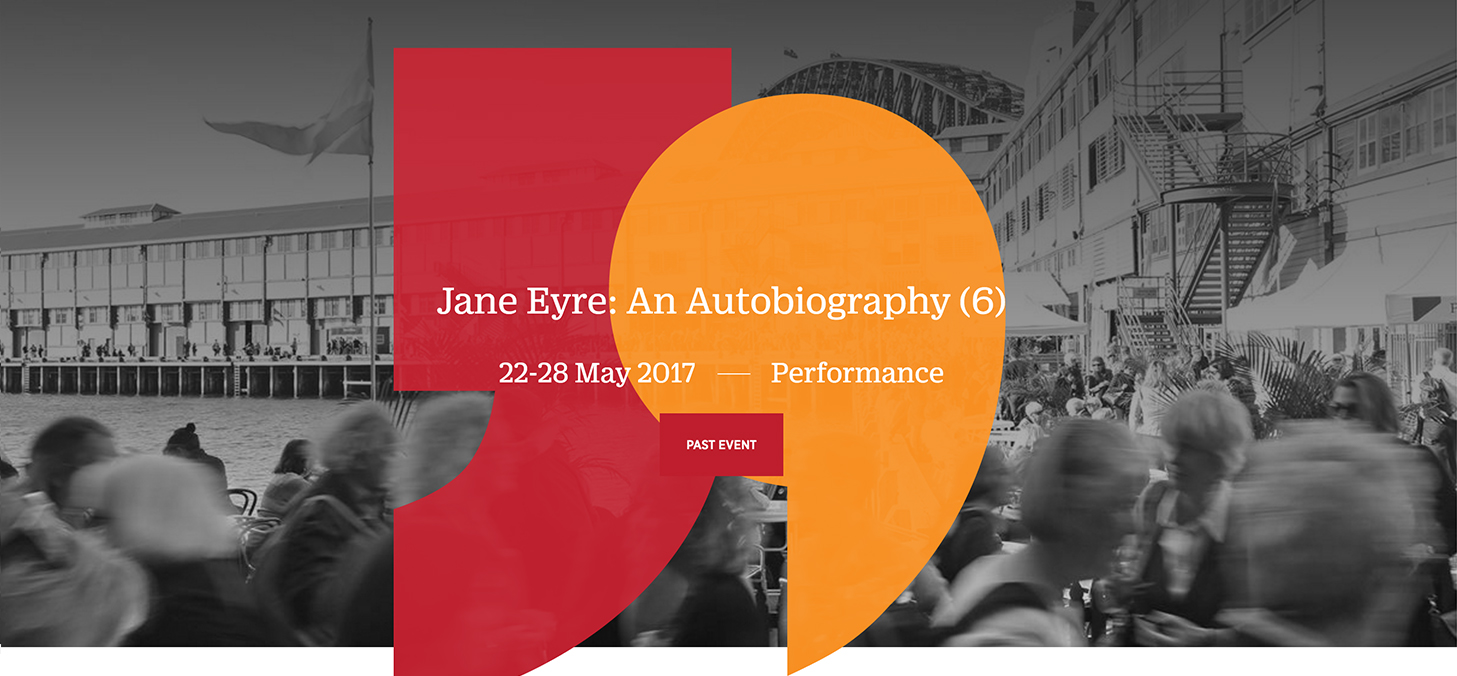Sydney Writers' Festival Student Blogger Review: Jane Eyre - Claire Thompson
Jane Eyre: An Autobiography is anything but plain.
Jane Eyre: An Autobiography is anything but plain.

Claire Thompson
A woman wearing a grey, 19th-century style dress stands in the middle of the Sydney Theatre Company’s Wharf 2 stage. Looking at her standing alone on the stage, I briefly worry that it is simply not possible for one woman to convey every unique character in Charlotte Bronte’s Jane Eyre in a convincing way. But then Rebecca Vaughn launches into a monologue which introduces us to Jane Eyre at ten-years old and my worries are cast aside, replaced by pure amazement at how a grown woman can make me believe she is only a small, orphan girl. By the end of her performance she has portrayed over twenty different characters from the elderly Mrs Fairfax to the gruff Mr Rochester. Vaughn not only proves it is possible to portray every character from Jane Eyre in a convincing way, but it is also possible to do it in an entertaining way, making myself and many others in the audience laugh out loud numerous times.
Dyad Productions’ Jane Eyre: An Autobiography, a one-woman show written and directed by Elton Townend Jones and performed by Rebecca Vaughan, showed for six nights at the 2017 Sydney Writers’ Festival. Townend Jones stays true to the original narrative, depicting young Jane’s experience at Lowood through to her time as governess at Thornfield Hall, her romance with Mr Rochester and the complications that follow. The performance went for an hour and forty minutes with no intermission proving Vaughn has incredible stamina.
Vaughan demonstrated in Austen’s Women, which she brought to last year’s Sydney Writers’ Festival, that she is adept in acting out a vast array of characters and Jane Eyre: An Autobiography is no exception. Vaughan distinguishes between characters through her body language – hunching over for frail characters like Bessie or putting her arms behind her back and walking stiffly around the stage for the stern school manager, Mr Brocklehurst. She further establishes different characters through her voice; employing a deep tone for Mr Rochester or an Irish lilt for servant Grace Poole. Occasionally she turns her face away from the audience and down towards the ground to convey a character’s despair, which unfortunately makes it difficult to understand her dialogue. But perhaps this was necessary to more fully encapsulate the character’s emotional turmoil.
Vaughan develops the relationships between characters and progresses the narrative by acting out their conversations. Instead of acting out both sides, which could be quite disruptive, she only acts out the dialogue of one of the characters. Through the body language and voice of this character she reveals the second character’s response. This works well in a scene where Jane speaks to the innkeeper to enquire after Mr Rochester and Vaughan only acts out the innkeeper’s dialogue. Despite not hearing what Jane says, we can interpret her enquiry and response to discovering Mr Rochester is alive and being cared for at his manner house, because the innkeeper leans to one side as if looking out a door after Jane, and protests, “But it’s 30 miles off”.
There are no costume changes or lavish sets to aid Vaughan in portraying different characters and scenes. Instead the stage is set with just a single grey chair which serves various purposes; a bed for the ill Helen, a chaise lounge for Mr Rochester and a stool for young Jane to stand on as punishment. Vaughan wears the same plain, grey dress for the duration of the performance, even when she is acting out male characters. It is a credit to her skill as an actress that despite wearing a dress she can still portray male characters convincingly. The only prop Vaughn implements is a wine glass, which she holds as she portrays Mr Rochester during his retelling of his romance with Celine Varens, the mother of his child who Jane is governess to.
Lighting helps to convey different scenes. A red light creates a threatening atmosphere during Jane’s night in the red room, casting three large shadows of Jane onto the backdrop, making Jane look small and vulnerable in comparison. Yellow lighting and sound effects of birds illustrates morning and minimal lighting signals night scenes. Sound effects also illustrate Mr Rochester’s “mad” wife, Bertha Mason’s cackling. During Jane’s time at Lowood, there are five consecutive scenes acted with minimal lighting. This made it difficult to interpret Vaughan’s body language and did not seem necessary as it was not night for all five scenes nor a particularly desolate mood.
Townend Jones captures the beauty of Jane’s character by adding humour to melancholic situations. When Jane discovers Mr Rochester is blind with an amputated hand, he changes the novel’s original interchange and adds Mr Rochester asking if Jane thinks him hideous to which she replies, “Yes, but you always were,” making the audience laugh. Vaughan delivers similar witty remarks throughout the performance and each time she elicits laughter from the audience.
A true mark of any adaptation is if it can be enjoyed independent of the original. Vaughan’s performance is so unique that while it tells the same story, she does it in a new and exciting way. You do not need to have read Jane Eyre to enjoy Vaughan’s performance. However, if you have read it, it will give you a greater appreciation of the novel and remind you why two centuries later, we are still captivated by Jane, who is anything but plain.
This student review was written as part of the School of the Arts and Media course ARTS2126: Reviewing the Arts.